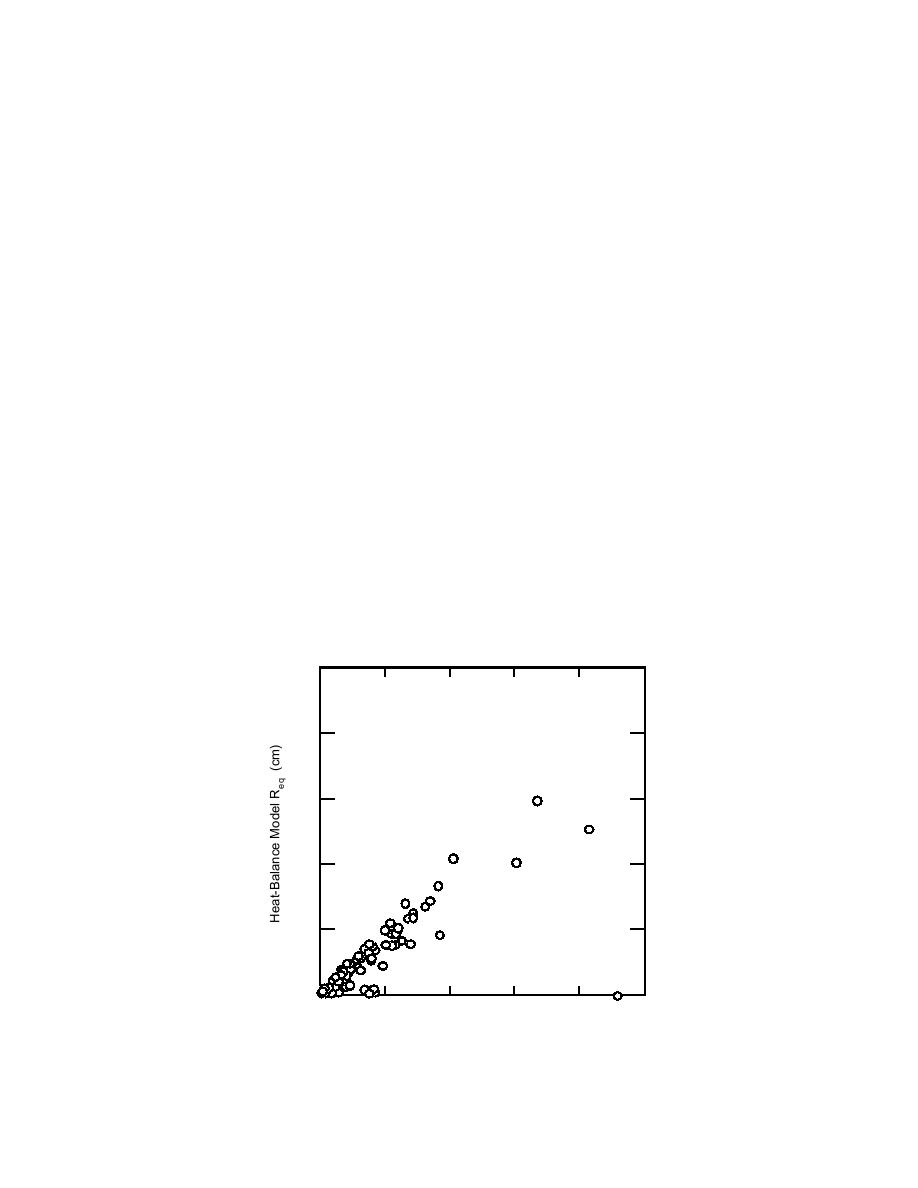
rather than as icicles. The ice thickness determined
or heavy precipitation. A time series of one of these
from the measured mass of ice on a 2.65-cm-
events, the 78 March 1990 ice storm, is shown in
diameter horizontal rod (Itagaki, in prep.) at
Figure 8. This storm was characterized by high
CRREL's freezing-rain weather station was 0.19
precipitation rates, up to 1 cm/hr, increasing tem-
cm. Both models predict equivalent radial ice ac-
perature and relative humidity, and high diffuse
cretions 0.18-cm thick. While this good agreement
solar radiation during the day. As the air tempera-
is encouraging, further testing of the models in
ture increased and freezing rain continued near
more extreme freezing-rain conditions is desirable.
the end of Julian day 66, little additional ice accreted
directly on the wire, but much of the runoff water
froze as icicles. It is during this time period that the
heat-balance model results diverge from the simple
10. DISCUSSION
flux model, which accretes all the impinging preci-
pitation.
This report describes two models to calculate
freezing-rain ice loads on horizontal cylinders from
The heat-balance model was also run for a 10-
cm-diameter wire to determine whether the lack
weather data. One model is very simple and re-
of dependence of the ice thickness on wire diam-
quires only the information that freezing rain is
occurring along with the concurrent precipitation
eter predicted by the simple model also holds
rate and wind speed. The more detailed model
when the heat fluxes, which are diameter-depen-
requires as additional information the air tem-
dent (Fig. 3), are incorporated in the ice accretion
perature, dew-point temperature, and solar radia-
calculation. The equivalent radial thicknesses for
tion flux, as well as the diameter of the wire on
these two diameters are compared in Figure 9 and
show almost no difference. This is undoubtedly
which ice is accreting. A comparison of the two
due to the accretion of runoff water as icicles,
models using the historical weather data at Des
which freeze independent of the wire diameter.
Moines indicates that the simple flux model is
One small but well-documented freezing-rain
conservative, as expected, but generally agrees
event at CRREL on 28 February 1995 serves as a
well with the detailed heat-balance model.
test for the two models against reality. This event
As freezing-rain events occur at CRREL, mea-
was characterized by cold temperatures, very light
surements of accreted ice on horizontal rods will
be compared with the models' predictions. This
winds, and light freezing drizzle that froze quickly
2.5
2.0
1.5
1.0
0.5
0
0.5
1.0
1.5
2.0
2.5
Simple Model Req (cm)
Figure 7. Comparison of uniform radial ice thicknesses at Des
Moines from the simple flux model and the heat-balance model.
16





 Previous Page
Previous Page
